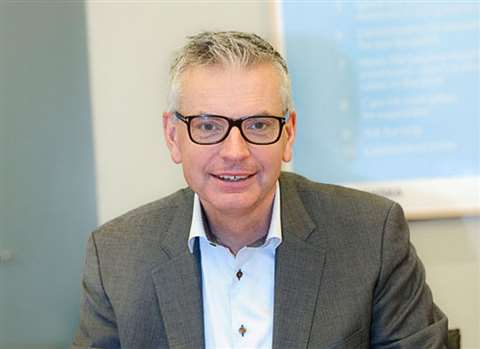Orders down, revenue up at Skanska
11 May 2015

A reduction of 14% in order bookings has been reported by Skanska for its construction division for the first quarter of this year compared to the same period a year ago.
Orders amounted to SEK30.2 billion (€3.26 billion) compared to SEK31.0 (€3.35 billion), and when adjusted for currency effects, this meant a fall of 14%, said Skanska.
The construction order backlog at the end of the first quarter amounted to SEK181.2 billion (€19.57 billion), compared to a figure on 31 December, 2014, of SEK170.5 billion (€18.42 billion). Skanska said that when adjusted for currency effects, the order backlog was unchanged.
It reported that revenue for the Skanska group was up at SEK34.1 billion (€3.68 billion) from SEK27.9 billion (€3.01 billion) in the first quarter of 2014, and that adjusted for currency effects, revenue increased by 8%. In the construction segment, revenue was up to SEK30.7 billion (€3.31 billion) from SEK25.2 billion (€2.72 billion) in the same period of 2014.
President and CEO Johan Karlström said, “Development in the construction business stream was good, with revenues increasing in all business units except in the Finnish operations. The Swedish and UK operations showed a strong order intake and the operating margin was strong in Sweden and Finland.”
He added that the margins in US building and US civil had decreased as a larger share of the projects were in early phases with “cautious profit recognition”.
In addition, he said, the operations in US civil had been hit by the harsh weather conditions as it incurred extra costs for project execution.
He added, “The divestment process of the O&M (operations and maintenance) part of the Latin American operation is progressing according to plan. In the first quarter, additional charges of about SEK130 million (€14.04 million) have been taken relating to the completion of the remaining E&C (engineering and construction) contracts in Brazil.”
Karlström said the infrastructure development business stream had reached financial close on the New Papworth Hospital in Cambridge, UK, which led to a construction contract of about SEK 1.8 billion (€194.35 million) for Skanska’s UK operations. He said the Norwegian market continued to develop in a positive direction, and that the US, where several projects were in the pipeline, was still its most promising market for future PPP (public-private partnerships) projects.
He mentioned that during the first quarter, there had been allegations regarding potential ethical breaches in the group’s Czech and Latin American operations.
He said, “I would once again like to emphasise that we take any such suspicions very seriously and we will continue to ensure that business ethics has the highest priority within all parts of the group.”
Market outlook
Looking ahead, the overall construction market outlook was positive, he said.
“The non-residential and residential building markets in Sweden are strong. The market for large civil projects in Sweden is improving although the landscape is competitive.
“In Norway, investments in infrastructure are expected to increase significantly in the years ahead. The non-residential market continues to weaken due to low oil prices, while the residential building market is relatively stable, with the exception of certain regions that are dependent on the energy sector.
“The overall market situation in Finland remains weak.”
Outside the Nordic region, the commercial building market and the civil market remained strong in the UK and Poland, according to Karlström.
“The markets in the Czech and Slovak Republics are improving on the back of an improved economic outlook, political stability and infrastructure investment plans,” he said.
“In the overall US infrastructure market, investments in energy-related projects are being negatively impacted by the low oil prices, while the market for large and complex civil construction projects remains good, although competition is intense.”
He said there was positive development in the US building construction market, in the aviation, education, commercial buildings, and life science and healthcare sectors.
“However,” said Karlström, “there are some indications that projects are taking longer to reach the market.”




